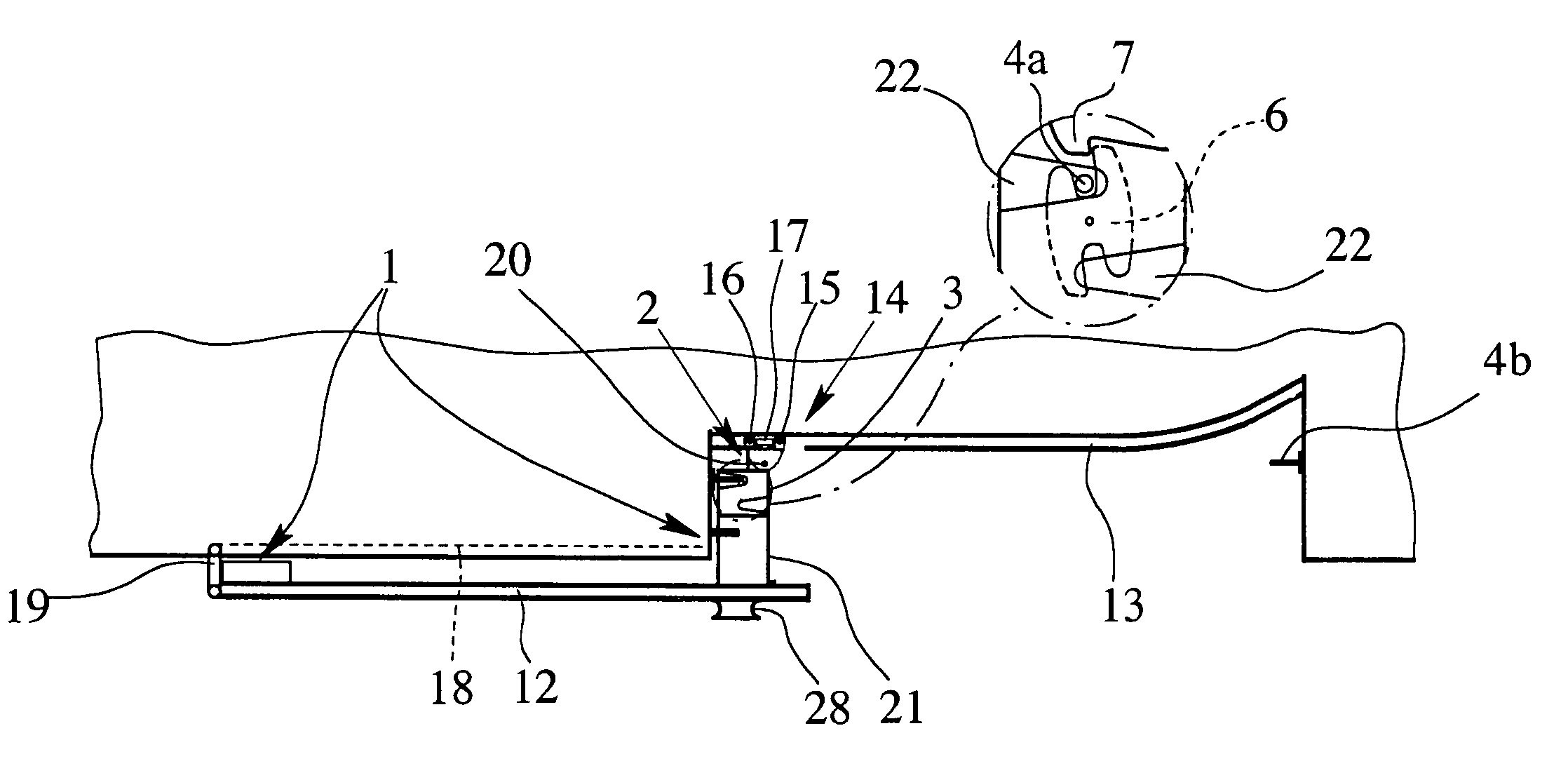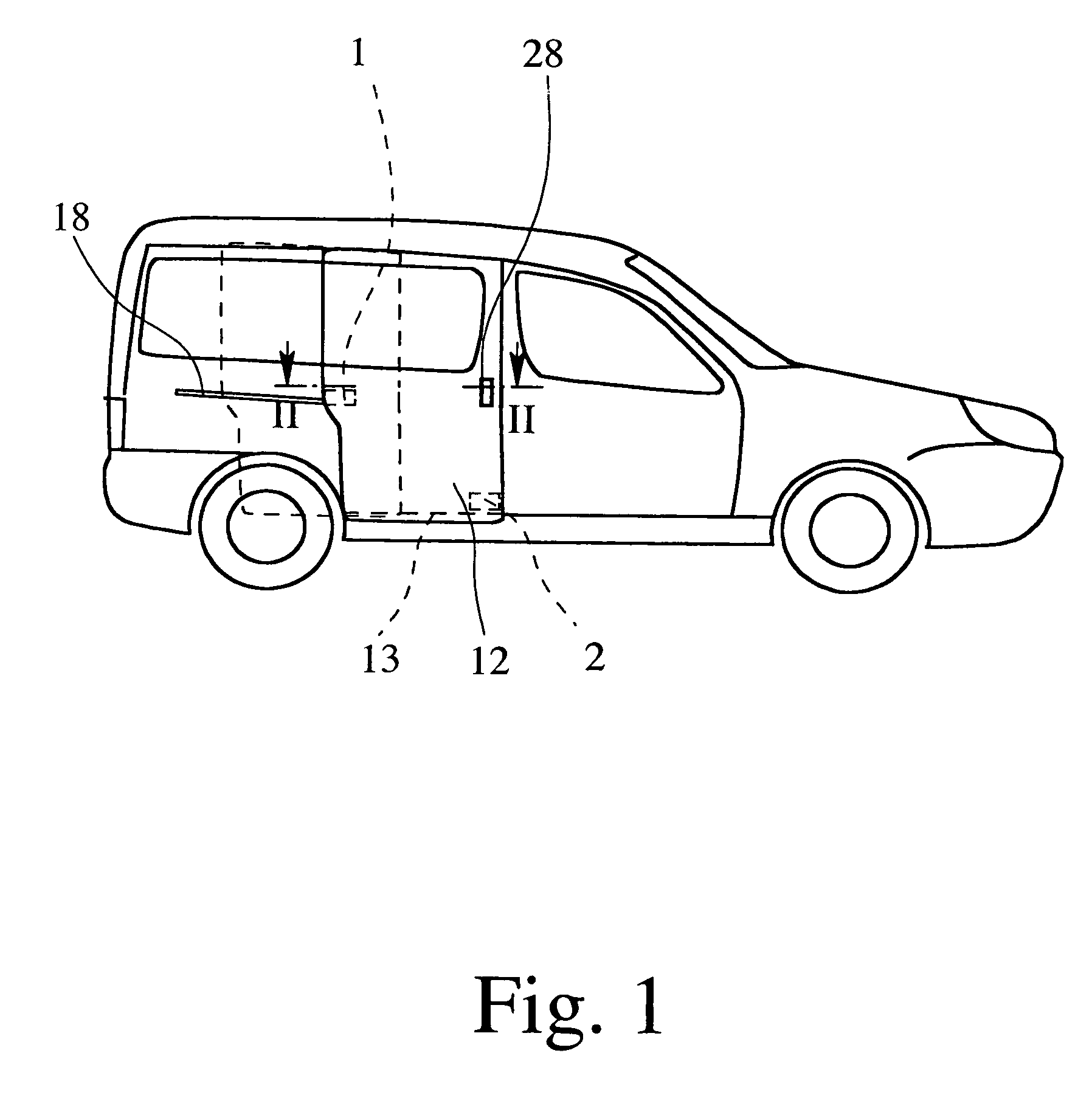Sliding door for a motor vehicle
a sliding door and motor vehicle technology, applied in the direction of carpet fasteners, wing accessories, lock applications, etc., can solve the problems of poor security against unintentional opening of sliding doors, poor ease of use, and considerable danger for motor vehicle passengers, so as to achieve maximum ease of use and minimum construction effort
- Summary
- Abstract
- Description
- Claims
- Application Information
AI Technical Summary
Benefits of technology
Problems solved by technology
Method used
Image
Examples
Embodiment Construction
[0031]FIG. 1 shows a motor vehicle equipped with the sliding door that can be moved in a sliding motion into opened and closed positions for opening and closing a loading and unloading opening of the motor vehicle. For this purpose, the sliding door is rail-guided, as is explained below. However, other designs can also be selected to implement the desired movement kinematics of the sliding door.
[0032]The sliding door is equipped with a main lock arrangement 1 by which the sliding door can be fixed in the closed position. To support the main lock arrangement 1 in the fixing of the sliding door in the closed position, there is an auxiliary lock arrangement 2. It is important that the auxiliary lock arrangement 2 is also made such that the sliding door can be fixed by the auxiliary lock arrangement 2 in the opened position (FIG. 2).
[0033]The main lock arrangement 1 is shown only schematically in FIGS. 1 to 3. The main lock arrangement 1 preferably has conventional latching elements, su...
PUM
 Login to View More
Login to View More Abstract
Description
Claims
Application Information
 Login to View More
Login to View More - R&D
- Intellectual Property
- Life Sciences
- Materials
- Tech Scout
- Unparalleled Data Quality
- Higher Quality Content
- 60% Fewer Hallucinations
Browse by: Latest US Patents, China's latest patents, Technical Efficacy Thesaurus, Application Domain, Technology Topic, Popular Technical Reports.
© 2025 PatSnap. All rights reserved.Legal|Privacy policy|Modern Slavery Act Transparency Statement|Sitemap|About US| Contact US: help@patsnap.com



